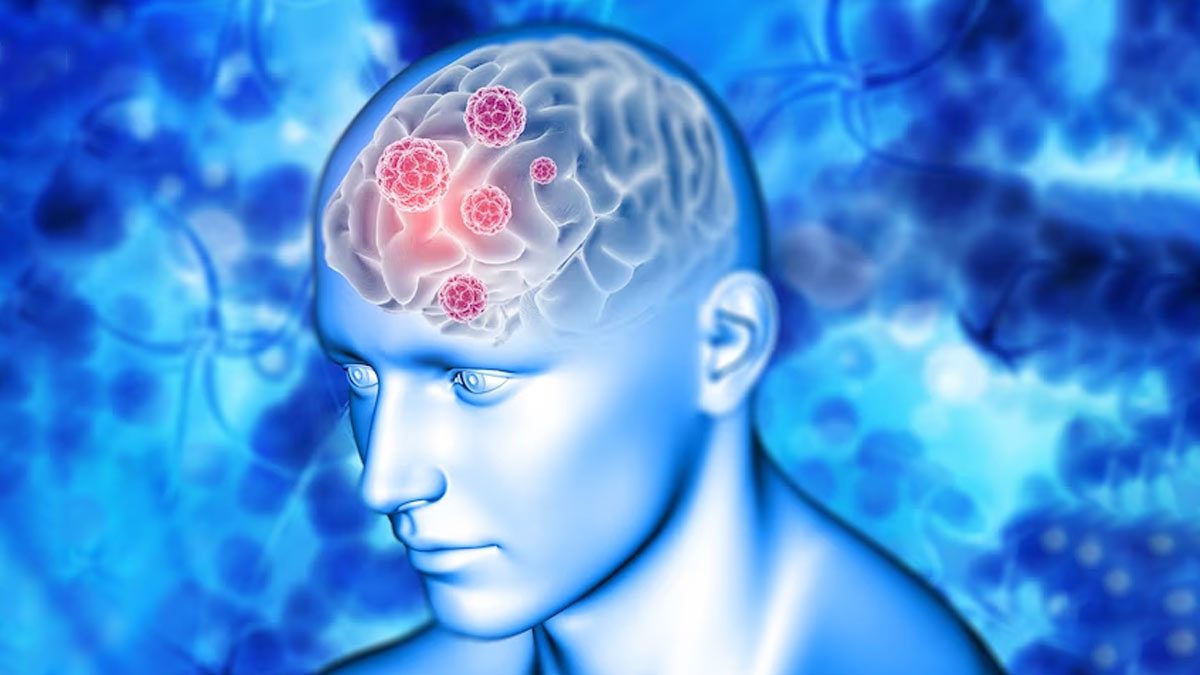
A brain tumour is a growth of aberrant brain cells. In India, brain tumours afflict 28,000 people and 24000 people die from it, according to an annual report of International Association of Cancer Registries(IARC). The most common brain tumours are metastatic brain tumours, followed by - gliomas, meningiomas, pituitary tumours, and schwannoma. In an interaction with Only My Health, Dr Upasna Saxena, Senior Consultant - Radiation Oncology at HCG Cancer Centre, Mumbai, explains all about brain tumour.
Table of Content:-
Types Of Brain Tumours
Brain tumours can be both benign or malignant (cancerous). Depending on the type, size and the location of the tumour, the effects on health can be minimal or lead to serious health complications.
The type of tumour is the basis for the subsequent treatment and the expected outcome of treatment. Radiation therapy with or without chemotherapy is offered based on the type of tumour and post surgery MRI. Some even require prolonged courses of chemotherapy after completion of radiotherapy.
Dr Saxena said, “I would like to underline that some cancers may not require any additional therapy after surgery - however that decision is made by the doctor,” adding, The treatment options for a recurrence include a combination of the same modalities as before, but depend on the period since prior therapy, kind of tumour, volume of illness, patient status, and predicted treatment outcomes.

Risk Factors Of Brain Tumours
There are several risk factors for brain tumours. “Although there is no scientific proof of a relationship, exposure to solvents, pesticides, oil products, rubber, or vinyl chloride may raise the chance of getting a brain tumour. Family history is also a risk factor as brain tumours are also linked to hereditary genetic factors but in less than 10% cases”, said Dr Saxena.
Exposure to infections, viruses, previous treatment to the brain or head with ionising radiation. Some other risk factors that are under evaluation are head injury, allergens, other viral infections and electromagnetic radiation.
Also read: Why Is World Brain Tumour Day Observed?
Symptoms Of Brain Tumour
According to the journal Elsevier, brain tumours are more likely to develop in males than in women. But some specific types of brain tumours, such as meningioma, are more common in women. Brain tumours can cause:
- New or changed headache patterns
- Unexplained nausea and vomiting
- Blurred vision or double vision
- Gradual loss of sensation or movement in an arm or leg
- Difficulty with balance
- Speech difficulty
- Personality or behavioural changes
- Seizures or fits
- Hearing problems, and other symptoms.
The symptom depends on the area of the brain where the tumour is located (that particular function or functions is affected) and by the volume and type producing pressure effect.

Treatment Options For Brain Tumour
Prognosis is excellent when benign tumours are completely removed. In many cases of patients with cancerous brain tumours surgical removal with or without radiotherapy helps in increasing survival rates. According to Dr Saxena, the success rate of surgery has improved significantly on the back of microneurosurgery, advanced technology, and state-of-the-art equipment.
Also read: 5 Symptoms That Point Towards A Diagnosis Of Brain Tumour
Surgery is the first line of treatment for two reasons - the primary objective is to remove as much tumour as possible with complete removal being the best, the second objective is to have the tumour tissue to define the type of tumour.
Post Treatment Quality Of Life
Post-treatment quality of life (QOL) must be given priority. Brain tumour patients face symptoms secondary to focal neurologic deterioration, personality changes, cognitive deficits, aphasia(trouble speaking), or visual field defects, impact on memory and intelligence.
A very important part is also change of appearance with temporary or permanent hair loss, surgical scar or deformity. Apart from rehabilitation, counselling is very important to cope with the physical impact of tumours and treatment.
Having said that, caregivers need to spend some quality time with patients and help them get emotional support, and assist them through rehab. There is a tremendous need for tolerable and effective therapies, intensive treatment of side effects and additional efforts to assist patients to continue their daily life.
Also watch this video
Read Next
4 Most Ignored Cancer Symptoms
How we keep this article up to date:
We work with experts and keep a close eye on the latest in health and wellness. Whenever there is a new research or helpful information, we update our articles with accurate and useful advice.
Current Version